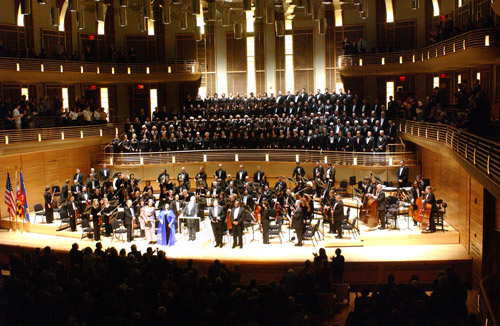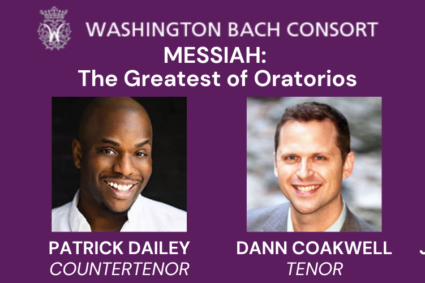
The National Philharmonic Orchestra, The National Philharmonic Chorale and Conductor Piotr Gawjewski presented Tchaikovsky’s Pathétique Symphony at The Music Center at Strathmore. The program also included Johannes Brahms, Gesang der Parzen (Song of the Fates) and Nänie.
Piotr Gajewsky conducted from a raised chair. A precaution due to recent medical treatment. He didn’t sit in the chair but leaned on it more so like a bar stool. The orchestra and chorale were immense! Johannes Brahms (Song of the Fates) and Nänie required a full 170-person chorale! The sound they can create when paired with an orchestra is spectacular! Johannes Brahms (Song of the Fates) was an absolute favorite! It was dramatic but like watching an epic gladiatorial battle amongst Greek God’s. It’s based off Iphigenie auf Tauris a play written in 1779. A Euripides drama was Agamemnon’s daughter is offered to the God’s as a sacrifice. It was dark, triumphant, prolific and outstanding! This was a superb performance almost like a finale to start the program. It was interesting for Piotr to select this song for the program. A song depicting sacrifice paired with Pathétique.
Tchaikovsky mysteriously died nine days after Pathétique was first premiered. There is speculation on how he died. He either contracted cholera from drinking unboiled water or was forced to commit suicide or both. In 1981 The NY Times wrote an interesting article, Did Tchaikovsky Really Commit Suicide? Musicologist Alexander Orlova states, “The main reason for the composer’s tragic fate lies in his homosexual inclination.” The article also suggests a cover-up by Tchaikovsky’s brother Modest, and a ”court of honor” upheld to keep the homosexuality a secret. This gives the suicide theory some truth but it’s all highly debatable. In 1981 the enigma of Tchaikovsky’s death even sparked a bizarre and doom-haunted production of Pathétique by New York City Ballet’s George Balanchine. In that instance, Pathétique is presented as a requiem. So was Tchaikovsky’s Pathétique A Requiem? I guess that’s debatable. Tchaikovsky made some outstanding claims about how he felt about his work. He stated, “I have put my soul into this work…. I love it as I have never before loved any my musical offspring…. I have never felt such satisfaction, such pride, such happiness as in the knowledge that I myself am truly the creator of this beautiful work.” It sounds as if Tchaikovsky knew this would be his last work as if he was writing his own requiem just like Mozart believed. Tchaikovsky even wrote that the ultimate essence of the symphony was four movements, Life, Love, Disappointment, Death. DEATH! The last movement Tchaikovsky ever wrote was a finale with the essence of death! It was even suggested the program named Tragic Symphony before Pathétique was agreed upon. Pathétique a French word meaning “emotionally moving.” Even if Pathétique wasn’t intentionally written as a requiem it turned into one by default and it’s a brilliant reflection of a brilliant composer.
The National Philharmonic Orchestra performed Pathétique superbly! It was at times thrilling. The movement described by Tchaikovsky as love was a memorable execution, The Allegro Con Grazia. The playful violins blended in a unique fashion. The pizzicatos were enjoyable to listen too. This movement has some really ornate pizzicatos. The National Philharmonic executed them brilliantly. The last movement the Finale: Adagio lamentoso-Andante was explosive! The orchestra rocked and I even noticed orchestra members giving themselves a pat after executing Allegro molto vivace. This was an amazing performance and the audience erupted at the conclusion.
This was a spectacular performance a great way to end The National Philharmonics 2016 season. The 2017 season schedule is now out and reservations are being taken.


